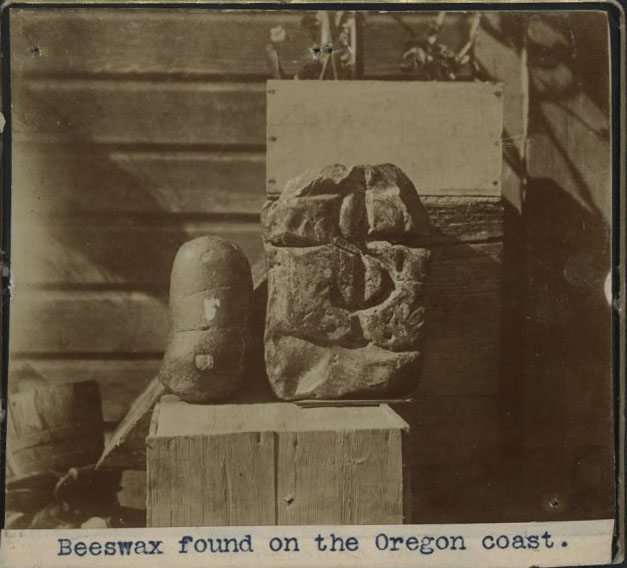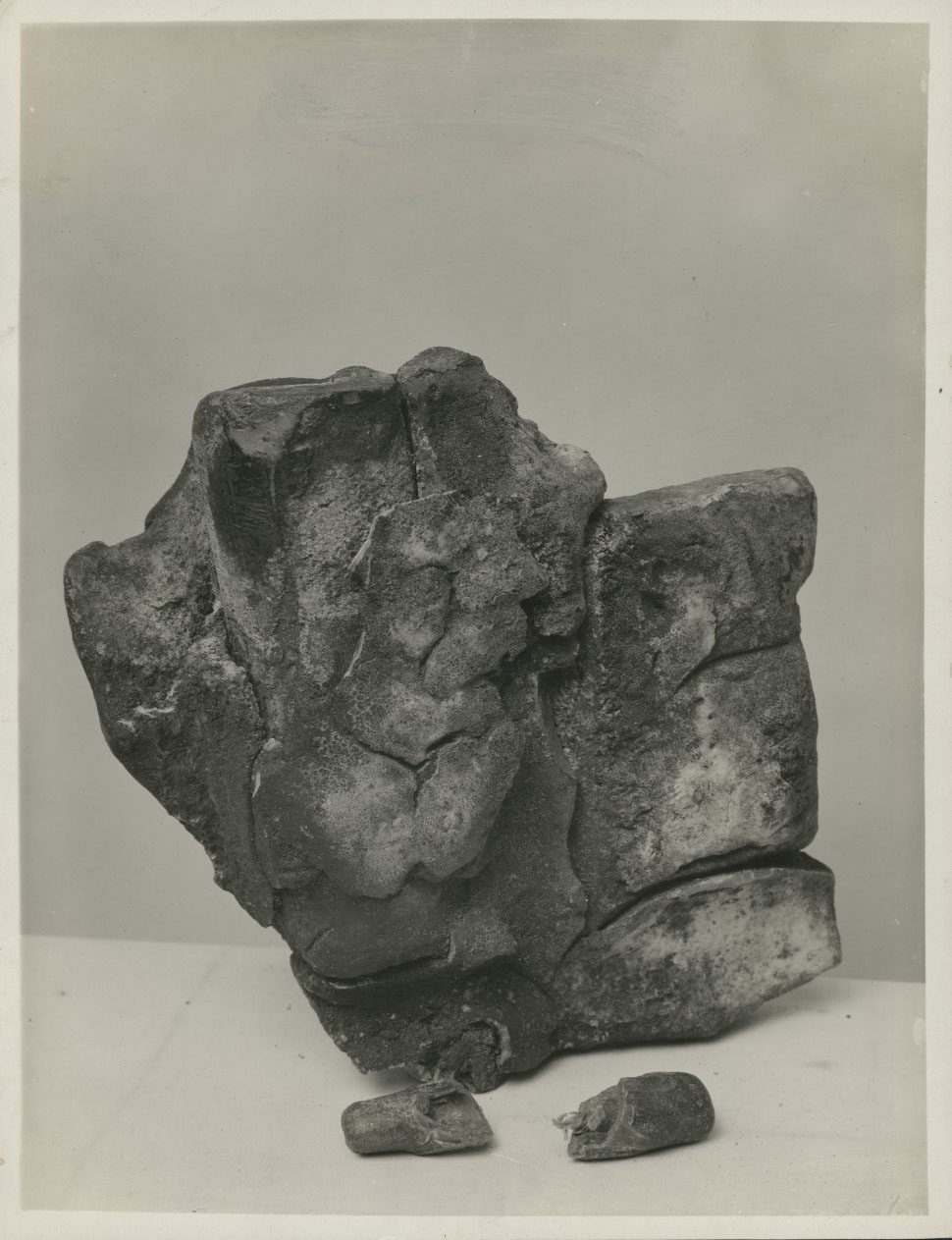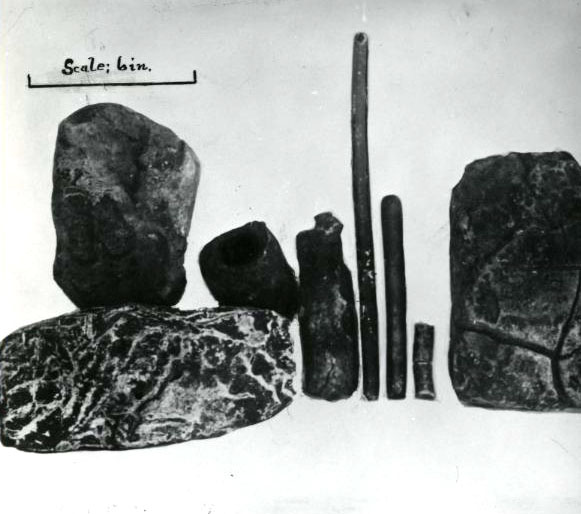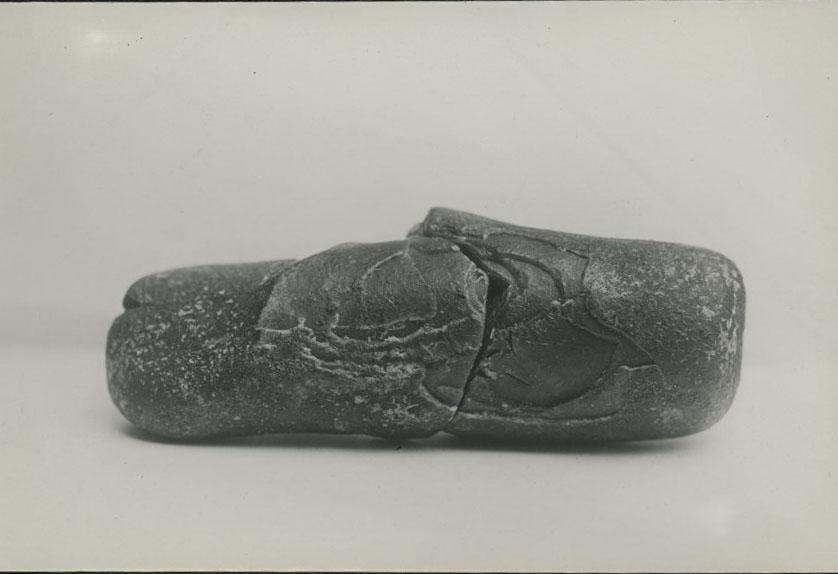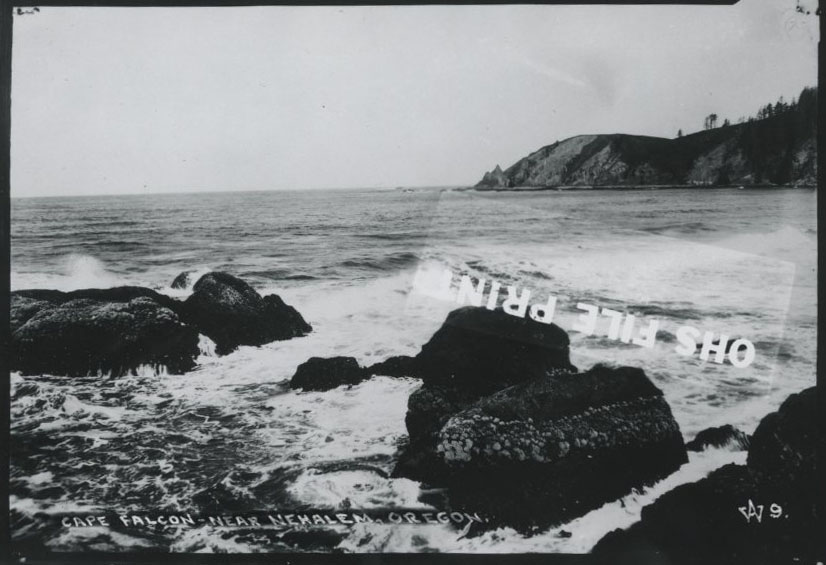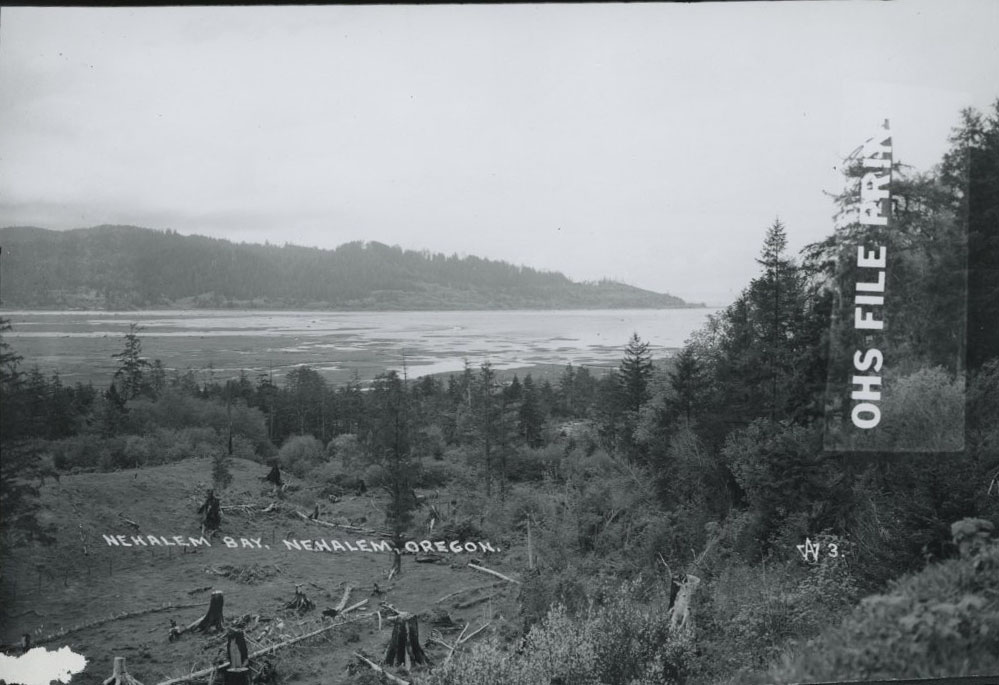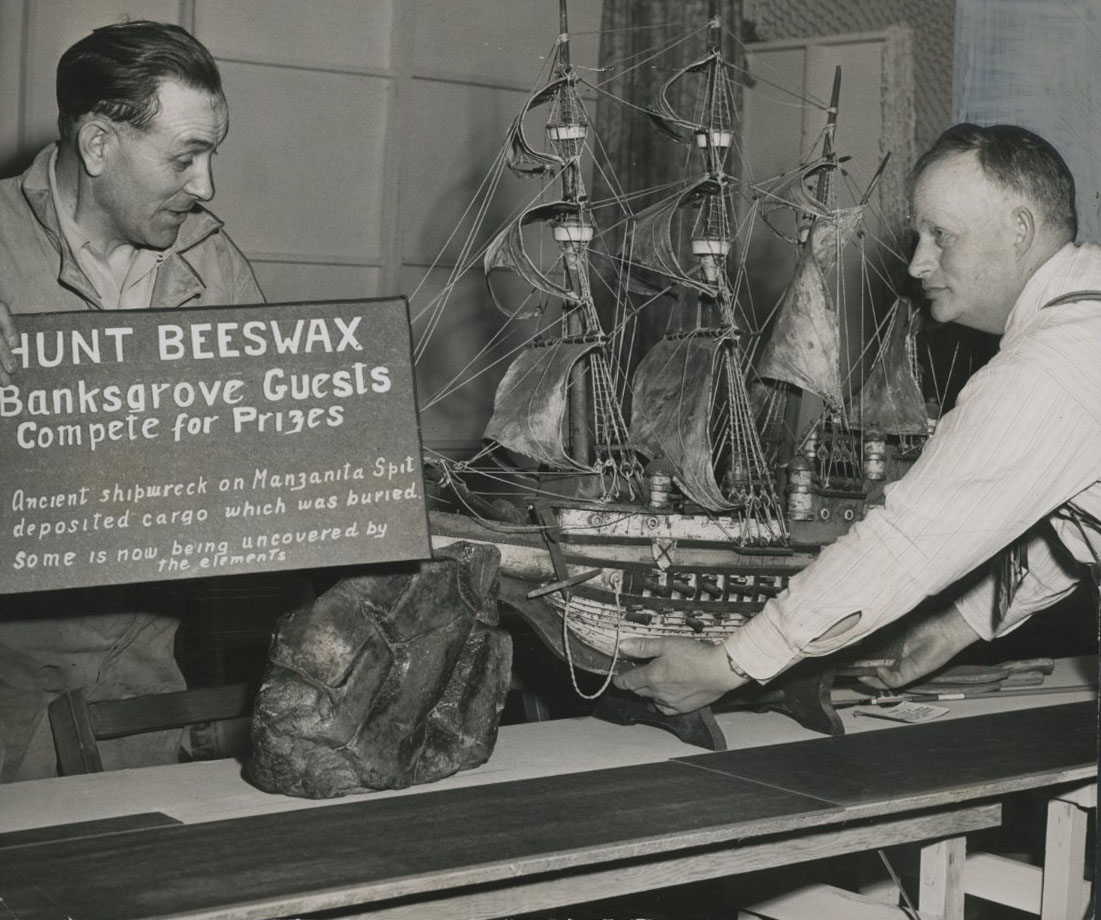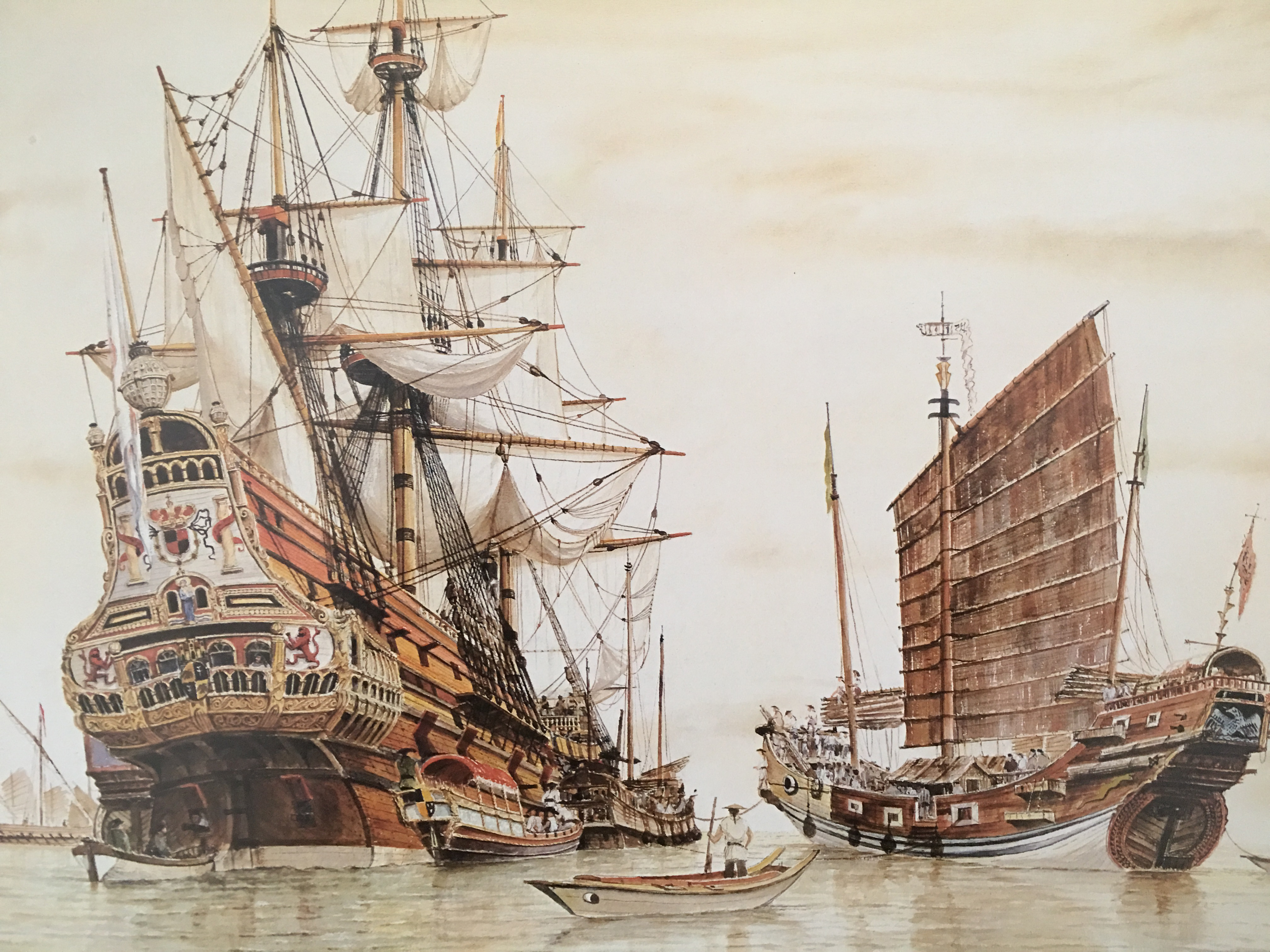Since the earliest days of EuroAmerican settlement on the Oregon Coast, stories have been told of a mystery shipwreck, laden with Chinese porcelain and large beeswax blocks and candles, exposed on Nehalem Spit where the Nehalem River meets the Pacific Ocean.
The wreck was first described in writing in 1813 by the fur trader Alexander Henry of Astoria. Clatsop Indians, who had brought wax to Astoria to trade, told Henry that the source of the wax was a large ship that had wrecked many years before at Nehalem. Based on its cargo, Henry assumed that the ship was a Spanish vessel, and over the years others variously assumed the wreck to be a Spanish galleon, a Chinese junk, a Portuguese trader, or a Dutch or English pirate vessel.
Throughout the nineteenth century, local residents of the Nehalem Valley collected tons of beeswax to trade in Astoria, Portland, and even Honolulu, and used teak timbers from the wreck to make furniture and souvenirs. Fortune hunters came to Nehalem to search for treasure that was thought to be buried on nearby Neahkahnie Mountain or Nehalem Beach.
Archaeological and historical research indicates that the Beeswax shipwreck was a Spanish galleon of the Manila trade. Only the Spanish traded beeswax across the Pacific in large quantities, which was needed to make candles for churches in their colonies in the Americas. For nearly 250 years, from 1565 to 1815, the Spanish sailed a trade route that took Chinese and other luxury Asian goods bought in the Spanish colony of Manila in the Philippines across the North Pacific and down the west coast of North America to Acapulco, Mexico. There the goods were sold in the Spanish colonies or shipped on to Europe. The galleon then returned to Manila, laden with silver from the New World, and the cycle was repeated. Over the centuries that this trade was conducted, many galleons were lost to storms, pirates, or other disasters, but only four of the eastbound vessels set sail from Manila and disappeared without a trace.
The Manila trade was controlled by the Spanish government, and detailed records were kept of all the sailings to and from Manila. Many of those records still exist in the archives of Spain, Mexico, and the Philippines. Based on those records and the decorative styles of the Chinese porcelains that are associated with the Beeswax shipwreck, combined with radiocarbon dates on teak and beeswax wreckage, it is now known that the Beeswax shipwreck was the galleon Santo Cristo de Burgos, which left Manila in 1693. The galleon was loaded with Chinese goods and wax and carried 220 crew and sixteen passengers. Whether any survived the wreck is unknown, but it is likely that the Beeswax is one of the earliest shipwrecks in the Pacific Northwest.
-
![]()
Beeswax found on the Oregon coast, 1908.
Courtesy Oregon Hist. Soc. Research Lib., photo file 97
-
![]()
One of the beeswax specimens held by the Oregon Historical Society.
Courtesy Oregon Hist. Soc. Research Lib., 20915
-
![]()
Beeswax and other artifacts found on Nehalem beach, 1922.
Courtesy Oregon Hist. Soc. Research Lib., 00575
-
![]()
Beeswax found on the Oregon coast.
Courtesy Oregon Hist. Soc. Research Lib., Orhi92910
-
![]()
Inside of a piece of the Oregon coast beeswax.
Courtesy Oregon Hist. Soc. Research Lib., 70398
-
![]()
Nehalem.
Courtesy Oregon Hist. Soc. Research Lib., ba013268
-
![]()
Nehalem Bay.
Courtesy Oregon Hist. Soc. Research Lib., ba013262
-
![]()
Manzanita Mayor Ben Lane with a model of the San Augustin, 1951.
Courtesy Oregon Hist. Soc. Research Lib., 74188
Related Entries
-
![Neahkahnie Mountain]()
Neahkahnie Mountain
Neahkahnie Mountain, about twenty miles south of Seaside, is a prominen…
-
![Santo Cristo de Burgos]()
Santo Cristo de Burgos
The Manila Galleon Trade and the Wreck on the Oregon Coast Nehalem-Til…
-
![Shipwrecks in Oregon]()
Shipwrecks in Oregon
Approximately three thousand ships have met their fate in Oregon waters…
Map This on the Oregon History WayFinder
The Oregon History Wayfinder is an interactive map that identifies significant places, people, and events in Oregon history.
Further Reading
Hult, Ruby. Lost Mines and Treasures of the Pacific Northwest. Portland, Ore.: Binfords and Mort, 1960.
La Follette, Cameron, Douglas Deur, Dennis Griffin, and Scott S. Williams. "Oregon’s Manila Galleon." Oregon Historical Quarterly 119, No. 2 (2018): 150-159.
Marshall, Don. Oregon Shipwrecks. Portland, Ore.: Binfords and Mort, 1984.
Schurz, William L. The Manila Galleon. New York: E.P. Dutton and Co., Inc., 1959.
Williams, Scott S., Curt D. Peterson, Mitch Marken, and Richard Rogers. "The Beeswax Wreck of Nehalem: A Lost Manila Galleon." Oregon Historical Quarterly 119, no. 2 (2018) 192-209.
Williams, Scott S. The “Beeswax Wreck”: A Manila Galleon on the North Oregon Coast." Alaska Journal of Anthropology 15, nos. 1&2 (2017): 79-87.

